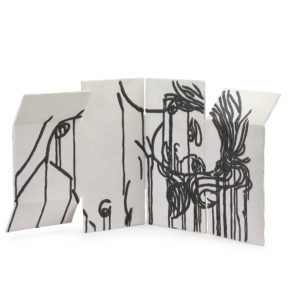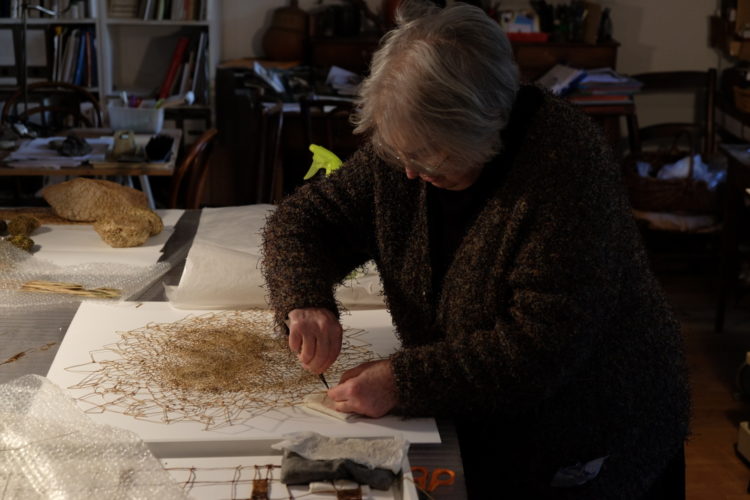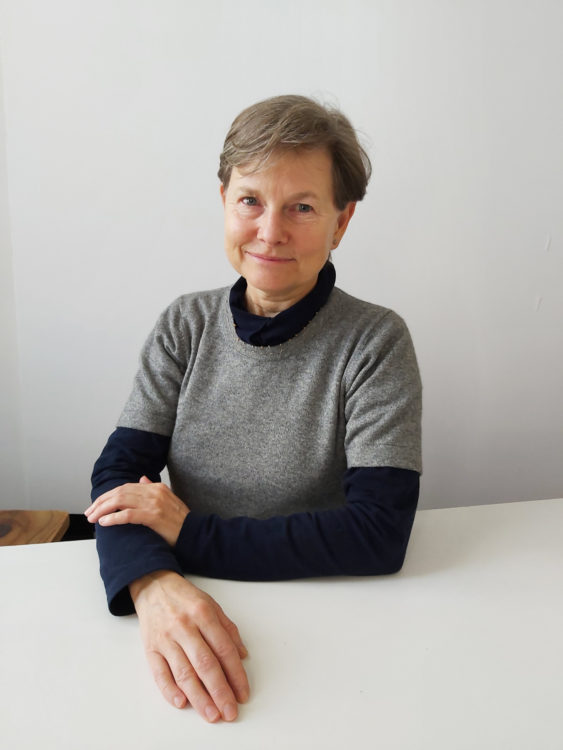Interviews
As a patron of the arts, a collector of sculpture and abstract art, and a feminist, Danièle Kapel-Marcovici does nothing without a sense of commitment and a passion for art. Contemporary art can be found everywhere in her life, not least in the collections of RAJA, the packaging firm her mother established in 1954 and which has become a European leader in its field with Danièle at the helm. Since 2011 she has been sharing her artistic discoveries with the public via Villa Datris, a foundation devoted to contemporary sculpture in L’Isle-sur-la-Sorgue in the Vaucluse region of southern France. “Datris” is an acronym formed from the first letters of her first name and that of her late partner Tristan Fourtine, with whom she created the organisation. Women and the struggle for women’s rights and equal opportunities have always played a central role in her projects, as evidenced in the support provided around the world by the RAJA-Danièle Marcovici Foundation, which she created in 2006, and the positions adopted in its exhibitions. The latest of these, Toucher Terre, l’art de la sculpture céramique, which presents the work of about one hundred artists, both women and men, once again bears witness to her commitment.
Marion Vignal: Contemporary art is all around you – in your offices at RAJA, at Villa Datris and in your private spaces. When did art enter your life?
Danièle Kapel-Marcovici: It didn’t happen at a specific moment: art has always been present. My mother loved design: the furniture at home was from Knoll; our dining table was by Eero Saarinen. My mother also loved contemporary jewellery. It all came about gradually, as the family business grew. I was immersed in an atmosphere of modernity that continued to permeate my life as a woman. I went to a lot of exhibitions in the 1970s. In the 1980s I met Tristan Fourtine, who was an architect. One of the first things we did as a couple was to visit the FIAC art fair in Paris. Contemporary art was always part of our lives. My parents travelled a great deal, as did I. Discovering architecture all over the world fuelled my interest in art.
MV: What was the first artwork you ever purchased?
DKM: I’ve never been a collector at heart, and neither was Tristan – collecting didn’t match our convictions or our values. We bought our first pieces during a trip to New York: a kinetic sculpture and a painting. We didn’t intend to build a collection at the time. We carried on going to exhibitions, sharing the convictions we had in common about life, society and art. We had two main centres of interest: sculpture and abstract art. We acquired some small paintings by Albert Gleizes. In the 1990s I started to buy a few artworks for the RAJA offices because I found out that certain artists were interested in packaging, which is the focus of our business. This became the common thread for our corporate art collection now comprising about 120 pieces, all of them new discoveries. The collection includes a compression by César dating from 1976 and a cardboard sculpture by the Ukrainian-born American sculptor Louise Nevelson.
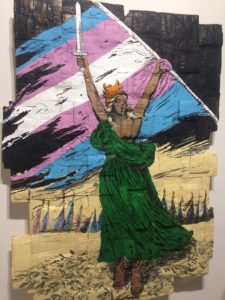
Andrea Bowers, Marianne is a Transfeminist, 2018, acrylic on cardboard, RAJA Art collection © collection RAJA Art
MV: Are you eager to maintain gender equality in the RAJA art collection?
DKM: Not as a deliberate strategy, though the collection does include artists that are clearly committed to the cause of women, for example a monumental work entirely painted on cardboard by the American artist Andrea Bowers, who was known for her active involvement in feminist struggles. This piece, which represents freedom, was an obvious choice for me, and it’s currently on display in my office.
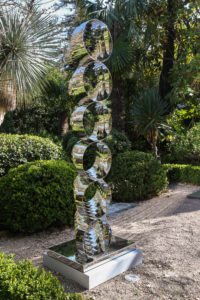
Marina Apollonio, Struttura in Acciaio 6 x 6, 1969, stainless steel, 185 x 60 x 48 cm, private collection © Tim Perceval
MV: How did the Villa Datris collection develop?
DKM: Contemporary sculpture quickly became a focus for our work and research: it responded to our taste for art in space, tactile relationships, architecture and diverse materials. I thought we’d exhaust the subject after a few exhibitions but as time went on new modes of expression appeared, in particular using braiding and ceramics. Sculpture has constantly reinvented itself. From the very first year we were eager to keep certain pieces we’d presented in our exhibitions, and we continued to do so. It’s ultimately a way of keeping the memory of the exhibition alive. The first show, Sculptures plurielles, in 2013, brought together marble and metal sculptures in which there was a sense of confrontation with the material used. The following year we opened Mouvement et lumière. Tristan and I loved abstract and kinetic art and we acquired several pieces that formed an important focus. We were especially fond of a piece by Marina Apollonio, whose work is being exhibited for the first time in her career at the Venice Biennale this year thanks to Cecilia Alemani and her exhibition The Milk of Dreams, devoted almost exclusively to women artists.
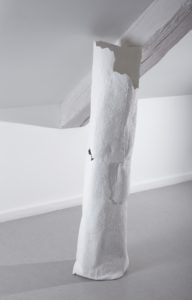
Gabrielle Wambaugh, Density of Surface Wall Paper “Conatus”, 2008, earthenware, 146 x 40 cm, courtesy of the artist © Gabrielle Wambaugh, ADAGP, Paris – 2022 © Bertrand Michau
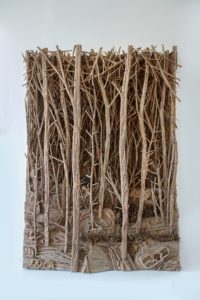
Eva Jospin, Forêt [Forest], 2012, wood and cardboard, 190 x 140 cm, RAJA Art collection © ADAGP, collection RAJA Art
MV: In 2013 you organised the exhibition Sculptrices. How did that idea come about?
DKM: With Sculptrices we wanted to adopt a militant stance and put women in the spotlight. As we moved forward with the project, we were aware that women were always undervalued in exhibitions, whatever their subject matter. That’s why Tristant and I – he was as much a feminist as I am, wanted to emphasise our position with the provocative title Sculptrices [Sculptresses]. In most of the projects we received, women would present themselves as sculptors, never as sculptresses. The exhibition allowed us to discover the work of a large number of artists we knew nothing about: Scandinavians, Americans, Indians and so on. We presented seventy artists. I had a sculpture by Ghada Amer, Blue Bra Girls, brought over from New York; it was a very symbolic piece for me. It’s a metal sculpture paying tribute to that young woman who was dragged through the streets of Cairo with her blue bra showing. It sparked an awareness of the role of women in culture and art – of their visibility. As I worked on the exhibition, I went to see several artists including Gabrielle Wambaugh, Mâkhi Xenakis and Eva Jospin, who was not well known at the time. She immediately said to me: “Your idea is great, we always see two women in an exhibition alongside ten guys.” So we pulled out all the stops.
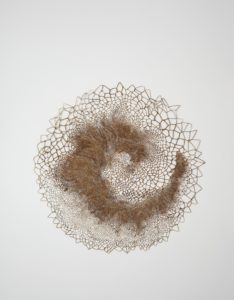
Marinette Cueco, Tondo, 1992, woven bulrushes, diam. 135 cm, courtesy of the artist © Bertrand Hugues
MV: Where did Tristan Fourtine’s commitment to the cause of women come from?
DKM: Tristan’s background made him very open to feminism. His mother was a great human rights and women’s rights activist and he’d taken part in the events of May 1968. In 2006 we created the foundation we called RAJA-Agir pour les femmes [RAJA-Action for Women]. Tristan passed away in January 2013 and in May we opened Sculptrices. Tristan’s eye for art stayed with me for a long time when I was choosing artworks. I now engage in a lot of discussions with Stéphane Baumet, director of Villa Datris, who joined us four years ago; we make all the curatorial decisions together. I also talk to my artist friends and to gallery owners and curators on a regular basis. I always decide what the shows will be about, but I rely on their skills to guide me. One’s eye gets sharper as time goes on. Tristan and I always saw Villa Datris as an opportunity to promote the work of women. Our son, Jules Fourtine, who runs Espace Monte-Cristo [the Paris branch of Villa Datris Foundation] with Pauline Ruiz, inherited our sense of commitment. He fell in love with the work of Marinette Cueco, a eighty-eight-year-old artist, and gave her carte blanche in the exhibition Tissage/Tressage. Quand la sculpture défile in 2018, which stimulated her to create an installation for the patio of our Paris gallery. She was delighted with this commission, which put her back in the spotlight and helped relaunch her career. For a long time she’d been overshadowed by her husband, the painter Henri Cueco, although she was a major artist herself – she was boundlessly creative. The admiring eye of a thirty-year-old youngster allowed her to bounce back.
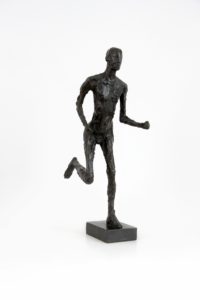
Germaine Richier, Le Coureur [The Runner], 1955, dark patinated bronze, 38,6 x 20 x 10 cm, private collection
MV: What did Sculptrices change for you and the foundation?
DKM: Since that show we’ve focused more on seeking out women artists. In Toucher Terre, most of the artists on our list are women. Since Sculptrices we no longer hear comments from visitors surprised to see bronzes signed by women. There was something educational about that show. The question visitors kept asking was, “How were you able to find so many women artists?” to which I’d reply, “Given twice the space, I’d have shown twice as many women artists of the same calibre”. Some people were surprised. We wanted Sculptrices to begin with historical figures, and at the entrance we presented Camille Claudel, Louise Bourgeois and Germaine Richier. This selection caused some debate: we didn’t all agree on Camille Claudel, whose sculpture La Danse we borrowed from the museum in Nogent-sur-Seine. I felt it was important to include a piece by her because she was one of those women who had to fight to create art. Since Sculptrices we’ve always combined historical figures with very young artists we want people to discover and for whom we provide some visibility. Exhibiting the work of women artists means supporting what they do and bringing them into contact with a gallery and collectors.
MV: In Toucher Terre, you show that the practice of ceramics, which was long undervalued because it was labelled a “women’s” art form along with textiles. It now interests men as much as women and escapes gender-based categories…
DKM: That’s true. I should also mention that we deliberately included artworks by men in Tissage/Tressage because we wanted to demonstrate that textiles interest a broad spectrum of artists and no longer fit into outdated categories.

Exhibition view Toucher Terre, l’art de la sculpture céramique, fondation Villa Datris, L’Isle-sur-la-Sorgue, May 27 – November 1st, 2022 © Bertrand Michau
MV: Tell us about the artists you discovered when you were putting together Toucher Terre, l’art de la sculpture céramique.
DKM: I fell in love with the work of Klara Kristalova – so much so that I decided to use a photograph of her work Youth as I Remember It as the visual for the exhibition. I find this sculpture very enigmatic: it’s like a little girl or a fairy – we don’t know if she’ll move towards the positive or the negative; it’s not clear whether she’s a “good fairy” or a “wicked fairy”. She seems fragile, but perhaps her fragility is an illusion. Making her into the symbol of the exhibition was a way of embodying the project and giving it a face. For most people, ceramics is more associated with decorative objects and design, but this piece, which is both reassuring and unsettling, breaks away from the conventional image of ceramics. Intriguing visitors is a good way of making them engage with us.
MV: A commitment to eco-feminism is also important to you. What form does this take?
DKM: The RAJA Foundation supports a lot of NGOs working in agriculture and ecology. Our “Women and the Environment” programme supports eco-farmers. For ten years we’ve been supporting Navdanya, an NGO headed by Vandana Shiva that supports conservation and biodiversity. I visited her at her centre in northern India and her team took us to some villages to visit women who have become self-sufficient farmers feeding the local community. It was an extraordinary experience. We also support Afghan women, Ukrainian women, and African and South American NGOs.
MV: You also often support artistic projects in a personal capacity. Can you give us some recent examples?
DKM: Yes, I like supporting projects, especially by bold, creative women whose work I can only admire. In 2018 I sponsored the publication of an art book, Les Pionnières (published by Somogy), which presents Catherine Panchout’s photographs of some twenty women pioneers of contemporary art and their studios, including Marta Pan, Vera Molnár and Pierrette Bloch. In 2020 I helped to produce Annie Maïllis’s documentary Pablo Picasso et Françoise Gilot. La femme qui dit non. I was delighted to be able to help Agnès Varda to restore her films. Since then, her daughter Rosalie has become a close friend of mine. These are projects I am eager to take part in because all these artists and their careers are sources of inspiration that I enjoy sharing with as many people as possible. Every year on 8 March, I give a gift to all the women working for my company. It’s become a tradition.
Marion Vignal is a curator, consultant and author. An expert in design and contemporary art, she supports young international artists through exhibitions, commissions and special projects. A literature and art history graduate, she has written several books on the history of design, interior design and olfactory art. She is president of ida M., an editorial and artistic consultancy she set up in Paris in 2015. In 2021 she initiated the experiential exhibition programme Genius Loci, which aims to spark dialogue between architectural heritage and contemporary art.
Marion Vignal; Danièle Kapel-Marcovici, "Danièle Kapel-Marcovici, the art of commitment." In , . URL : https://awarewomenartists.com/en/magazine/daniele-kapel-marcovici-lart-de-lengagement/. Accessed 20 January 2026

